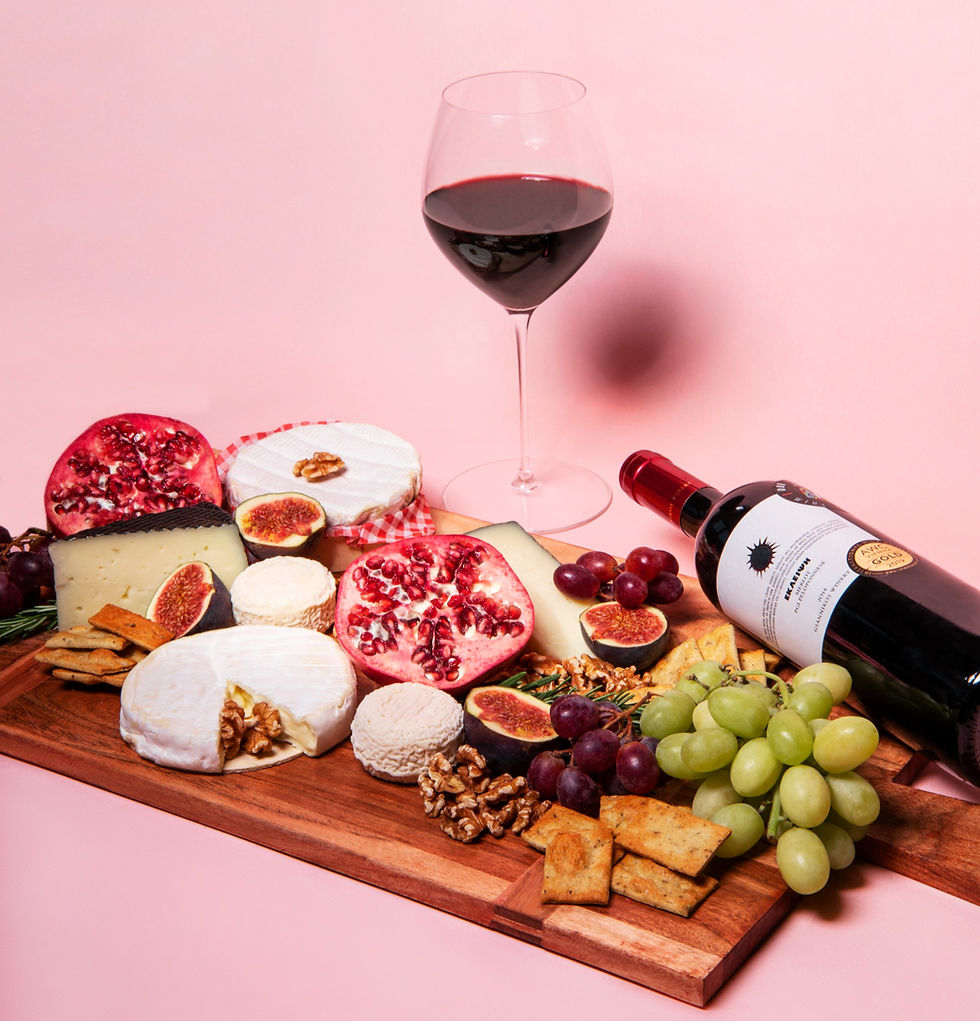Cheese and wine pairing for beginners
- Our Daily Bottle Wine Academy
- Apr 24, 2023
- 2 min read
If you're new to the world of cheese and wine pairing, it can be both exciting and intimidating to get started. You might wonder how to choose the right cheese and wine, how to know which flavors work well together, and how to host a successful pairing party. But fear not, as this beginner's guide to cheese and wine pairing will help you navigate the basics of this delicious culinary world.

First, let's explore why cheese and wine go so well together. The richness and creaminess of cheese can coat the palate, making it difficult to taste other beverages like water or juice. But wine's acidity can cut through the fat and cleanse the palate, enhancing both the cheese and wine's flavors. Additionally, cheese and wine often share similar flavor profiles, making them complementary partners.
The basic principles of cheese and wine pairing include pairing based on weight, flavor intensity, and acidity. For example, lighter-bodied white wines pair well with lighter cheeses like goat cheese or feta, while full-bodied white wines pair better with creamier cheeses like brie or camembert. Light-bodied red wines pair well with soft and mild cheese like manchego, while full-bodied red wines can hold up to more flavorful, aged cheeses like cheddar or gouda. Sparkling wines, fortified wines, and dessert wines all have their own unique pairing characteristics that we'll explore as well.
When choosing which wines to pair with which cheeses, it's helpful to consider the main categories of wine. Light-bodied whites, like sauvignon blanc, go well with goat cheese or feta. Full-bodied whites, like chardonnay, are best paired with creamier cheeses like brie or camembert. Aromatic whites, like riesling, pair well with a wide range of cheeses from soft white cheese to creamy brie and camembert. Sparkling wines, like champagne, pair well with nutty and mild cheeses such as gruyere or comte. Light-bodied reds, like pinot noir, pair well with soft and mild cheeses like manchego or gouda. Full-bodied reds, like cabernet sauvignon, pair well with aged cheeses like cheddar or smoked cheese. Fortified wines, like sherry, are excellent with blue cheeses like stilton. Finally, dessert wines, like sauternes, pair well with blue cheeses like roquefort.

Now that you have an understanding of the basic principles of cheese and wine pairing, it's time to start experimenting with your own pairings. Some classic pairings you might want to try include cheddar with cabernet sauvignon, brie with chardonnay, and gorgonzola with port. To make the most of your cheese and wine pairing experience, consider hosting a party with friends and family. Set up your cheese plate with a variety of cheeses, ranging from soft and mild to hard and strong. Include other food items like crackers, fruits, and nuts to complement the cheese and wine. When choosing and serving your wines, be sure to consider the basic principles we've discussed and offer a variety of options to suit different palates.
In conclusion, cheese and wine pairing is a delightful and delicious culinary world to explore. With the basic principles of pairing based on weight, flavor intensity, and acidity, as well as an understanding of which wines pair well with which cheeses, you'll be well-equipped to experiment with your own pairings. So gather your friends, set up your cheese plate, and let the tasting begin!




Comments